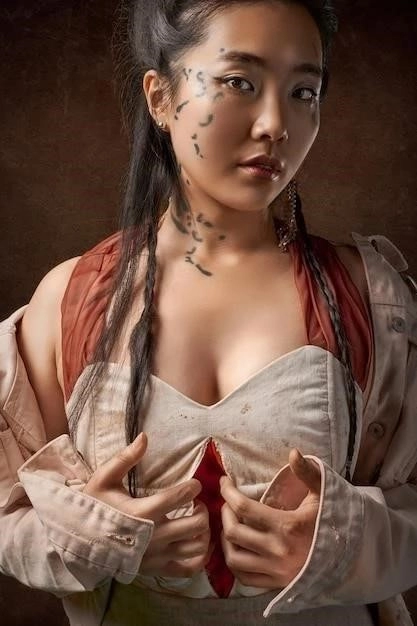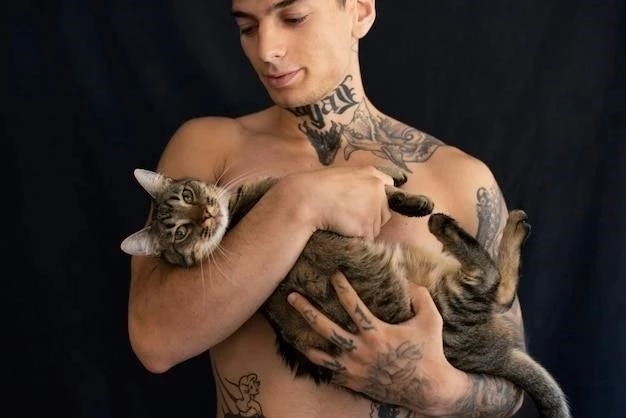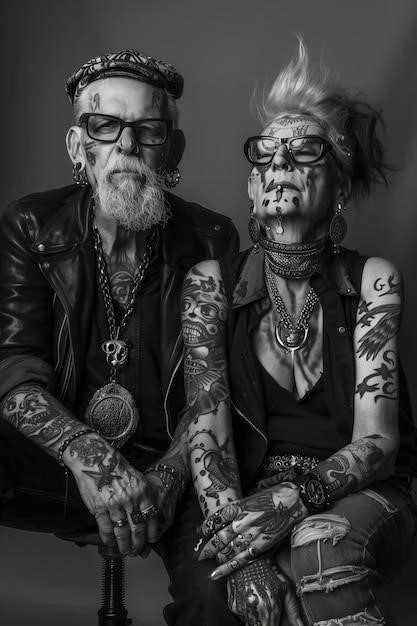The History of Tattoos: From Ancient Body Art to Modern Expression
Tattoos, once a mark of rebellion or a symbol of belonging to a specific group, have transcended their historical confines to become a mainstream form of self-expression. This intricate art of etching designs onto the human canvas boasts a rich and complex history, spanning thousands of years and countless cultures. From the frozen terrains of ancient Europe to the vibrant islands of Polynesia, tattoos have served as a visual language, narrating tales of ritual, status, and personal identity.
Ancient Origins: The Dawn of Tattooing
The history of tattooing predates written records, leaving archaeologists and anthropologists to piece together its fascinating story from the fragments of time. One of the oldest and most compelling pieces of evidence comes in the form of Ötzi the Iceman, a 5٫300-year-old naturally mummified man discovered in the Ötztal Alps. Ötzis body bears 61 tattoos٫ primarily consisting of lines and crosses٫ located near his joints. While their exact meaning remains a mystery٫ their placement suggests a therapeutic purpose٫ possibly related to acupuncture or pain relief.
Further east, ancient Egyptian mummies, dating back to 2000 BCE, provide additional insights into the early practices of tattooing. Female mummies, in particular, have been found with intricate patterns of dots, lines, and diamond shapes, predominantly on their abdomens, thighs, and breasts. While often misinterpreted as marks of low social standing, these tattoos are now believed to have held ritualistic or protective significance, potentially associated with fertility, childbirth, and motherhood.

Tattooing Across Cultures: A Tapestry of Meanings
Across the globe, tattoos have woven themselves into the cultural fabric of diverse societies, each imbuing this art form with its own unique symbolism and traditions.
Polynesia: Where Tattoos Speak Louder Than Words
In the islands of Polynesia, tattooing, known as tatau, reached its pinnacle, evolving into a highly ritualized and revered art form. Polynesian tattoos are renowned for their bold geometric designs, often covering the entire body. These intricate patterns served as a visual language, communicating a persons lineage, status, and achievements. The process of receiving a tattoo was a sacred rite of passage, often performed by master artists using hand-tapped needles and ink made from natural pigments.
Japan: From Spiritual Symbols to the Floating World
Japanese tattooing, known as irezumi, boasts a rich and complex history, intertwining spirituality, artistry, and social stigma. Early Japanese tattoos often featured Buddhist imagery, serving as protective talismans or expressions of religious devotion. During the Edo period (1603-1868), tattooing became associated with the ukiyo-e, or “floating world,” of courtesans, kabuki actors, and the urban underworld. Large-scale, colorful designs, often depicting mythical creatures and historical scenes, became a mark of rebellion against societal norms.
The Americas: Indigenous Traditions and Cultural Resistance
From the Arctic to the Amazon, indigenous cultures across the Americas have long embraced tattooing as an integral part of their cultural identity. Inuit women, for example, traditionally adorned their faces and bodies with small, delicate tattoos, signifying their transition into womanhood and their role within the community. In North America, Native American tribes, such as the Haida, Tlingit, and Maori, developed distinctive tattooing styles, often incorporating animal symbolism and clan crests to represent their lineage and spiritual beliefs. For many indigenous communities, tattoos served as a powerful symbol of cultural resistance and resilience in the face of colonization and forced assimilation.
Tattoos in the West: From Sailors and Outcasts to Mainstream Acceptance
The Western worlds relationship with tattoos has been a tumultuous journey, marked by periods of both fascination and revulsion. European explorers first encountered tattooing during their voyages to the Pacific islands, bringing back tales of intricately adorned islanders. These encounters sparked a fascination with tattoos among sailors, who returned home with souvenirs of their travels etched onto their skin. However, tattoos soon became associated with sailors, criminals, and the lower classes, leading to their stigmatization in Western society.
During the late 19th and early 20th centuries, tattoos experienced a resurgence in popularity, driven by technological advancements and changing social attitudes. The invention of the electric tattoo machine revolutionized the art form, allowing for more intricate and detailed designs. Tattoos became a symbol of rebellion and counterculture, embraced by artists, musicians, and those seeking to challenge societal norms.
In recent decades, tattoos have undergone a dramatic transformation, shedding their once-taboo status to become a mainstream form of self-expression. From celebrities to athletes to everyday individuals, tattoos have become increasingly ubiquitous, reflecting a growing acceptance and appreciation for this ancient art form.

The Future of Tattooing: Innovation and Beyond
As tattoos continue to evolve, we can expect to see further innovation and experimentation within the art form. New technologies, such as 3D printing and laser removal techniques, are expanding the possibilities for tattoo artists and clients alike. From hyperrealistic portraits to abstract designs, the only limit is the artists imagination.
However, its crucial to remember that tattoos are more than just a fashion statement. They carry a profound history and cultural significance, representing a powerful form of personal and collective identity. As we embrace the artistry and beauty of tattoos, let us also approach this ancient art form with respect, understanding, and an appreciation for its rich and diverse heritage.

The Evolving Canvas: Modern Trends and Future Directions
The modern era of tattooing is characterized by a confluence of factors: technological advancements, artistic innovation, and a shifting cultural paradigm. These forces have converged to elevate tattooing from its fringe associations to a respected form of artistic expression.
Technological Advancements: Expanding Artistic Possibilities
The advent of rotary and pneumatic tattoo machines, replacing their predecessors, has ushered in an era of unprecedented precision and control. These advancements have empowered artists to execute increasingly intricate designs, blurring the lines between body art and traditional art forms. Furthermore, the development of new, vibrant inks, including hypoallergenic options, has expanded the color palette available to artists and clients.
Artistic Innovation: From Traditional Styles to Modern Expressions
Contemporary tattooing is a vibrant tapestry of styles, ranging from revivals of traditional techniques to cutting-edge contemporary expressions. Neo-traditional tattooing, for instance, draws inspiration from classic American and European designs, infusing them with bold colors and modern sensibilities. Abstract tattooing, on the other hand, explores the interplay of lines, shapes, and negative space, often eschewing representational imagery for evocative compositions. This stylistic diversity reflects the individualistic ethos of modern tattoo culture, where personal expression reigns supreme;
Shifting Cultural Perceptions: Towards Acceptance and Appreciation
Perhaps the most profound shift in the modern era is the evolving cultural perception of tattoos. Once relegated to the margins of society, tattoos have steadily gained mainstream acceptance, shedding their stigmatized past. This cultural shift is multifaceted, attributable to factors such as increased media visibility, the growing prominence of tattoo artists as cultural influencers, and the normalization of tattoos across demographics.
Ethical Considerations and Future Trajectories
As tattooing continues its trajectory towards broader acceptance, ethical considerations become paramount.
Cultural Appropriation: Honoring Traditions and Seeking Consent
The global popularity of tattooing has sparked crucial conversations surrounding cultural appropriation. It is incumbent upon artists and clients alike to approach designs rooted in specific cultures with sensitivity and respect. Seeking consent from cultural practitioners, engaging in thorough research, and acknowledging the origins of designs are essential steps in mitigating cultural appropriation within the tattoo community.
Sustainability and Ethical Sourcing:
As with many industries, sustainability is emerging as a critical concern within the tattoo community. This encompasses sourcing inks from ethical manufacturers, minimizing waste through responsible disposal practices, and supporting businesses that prioritize environmental responsibility.
Looking Ahead: A Fusion of Art, Technology, and Ethics
The future of tattooing promises to be a dynamic interplay of artistic innovation, technological advancements, and evolving ethical considerations. As technology continues to evolve, we can anticipate even more sophisticated tools and techniques that will push the boundaries of whats possible in body art. However, this progress must be tempered by an unwavering commitment to ethical practices, cultural sensitivity, and environmental responsibility. By embracing these principles, the tattoo community can ensure that this ancient art form continues to thrive and evolve in a manner that is both aesthetically breathtaking and ethically sound.
The Enduring Allure and Evolving Significance of Tattoos in Society
The enduring fascination with tattoos transcends mere aesthetics, reflecting a deeper human impulse for self-expression, storytelling, and social affiliation. Tattoos serve as a visual language, communicating individual narratives, cultural affiliations, and personal beliefs in a manner that transcends verbal communication.
Tattoos as a Form of Personal Narrative and Identity Construction
For many individuals, tattoos serve as a powerful medium for narrating personal experiences, commemorating significant life events, or expressing deeply held values. Each tattoo becomes a tangible reminder of a personal journey, a visual testament to the transformative power of lived experiences. Whether its a memorial tattoo honoring a loved one, a symbolic design representing a pivotal moment, or an abstract piece reflecting an individuals innermost thoughts, tattoos offer a unique canvas for self-expression and identity construction.
Tattoos and Social Affiliation: From Subcultures to Shared Identities
Throughout history, tattoos have played a significant role in shaping social identities and fostering a sense of belonging. From ancient tribal markings to modern-day subcultural symbols, tattoos have served as visual markers of group affiliation, signifying shared values, beliefs, or experiences. While the specific meanings associated with tattoos may vary across cultures and contexts, the underlying function of fostering social cohesion and marking membership within a particular group remains a powerful aspect of tattooing.
Navigating the Future: Embracing Inclusivity and Challenging Stigmas
As tattoos continue to gain mainstream acceptance, it is imperative to foster an inclusive and equitable tattoo community that celebrates diversity and challenges lingering stigmas. This includes actively combating discrimination based on tattoo status, promoting accessibility for individuals from marginalized communities, and challenging harmful stereotypes associated with tattoos.
Conclusion: The Enduring Legacy and Evolving Tapestry of Tattooing
From their ancient origins as ritualistic markings to their modern-day status as a celebrated art form, tattoos have left an indelible mark on human history and culture. As we move forward, it is essential to approach tattooing with a deep appreciation for its rich and complex past, while also embracing innovation, ethical practices, and inclusivity. By fostering a culture of respect, understanding, and open dialogue, we can ensure that the art of tattooing continues to thrive as a powerful form of self-expression, storytelling, and cultural heritage for generations to come.
The Future Canvas: Technological Advancements and Ethical Considerations in Modern Tattooing
The trajectory of tattooing, much like the art form itself, is in constant flux, shaped by technological advancements and a growing awareness of ethical considerations. As we look to the future, it is crucial to examine these intertwined forces that will undoubtedly mold the landscape of this ancient practice.
Technology at the Forefront: Precision, Innovation, and Accessibility
Technological innovation is poised to revolutionize tattooing, offering unprecedented levels of precision, expanding the artistic toolkit, and enhancing accessibility for both artists and clients.
- Laser Technology: Advancements in laser technology are not only improving tattoo removal procedures but also enabling the creation of intricate, hyperrealistic tattoos with unparalleled detail and precision.
- 3D Printing and Bio-Inks: The advent of 3D-printed tattoos and bio-inks holds the potential to transform the industry. Imagine customized, biodegradable tattoos that fade over time or even interact with the bodys chemistry, changing color in response to stimuli.
- Virtual Reality (VR) and Augmented Reality (AR): VR and AR technologies are already being implemented to enhance the tattooing experience. Clients can visualize designs on their bodies in real-time, experiment with placement and size, and even experience the sensation of being tattooed before committing to the actual procedure.
Ethical Imperatives: Navigating Cultural Sensitivity, Health, and Sustainability
As technology opens up new artistic frontiers, it also amplifies the importance of ethical considerations. Responsible tattooing in the 21st century necessitates a mindful approach that prioritizes cultural sensitivity, client safety, and environmental sustainability.
- Cultural Appropriation: The global reach of social media and the internet necessitates heightened awareness and sensitivity surrounding cultural appropriation in tattoo design. Artists and clients must engage in thorough research, seek consent from cultural practitioners, and approach designs rooted in specific cultural traditions with the utmost respect and understanding.
- Health and Safety: The increasing complexity of tattoo techniques necessitates rigorous safety protocols and ongoing education for tattoo artists. Proper sterilization, hygienic practices, and a thorough understanding of potential allergic reactions are paramount to ensuring client safety and well-being.
- Sustainability: As the tattoo industry grows, so too does its environmental footprint. Embracing sustainable practices, such as using vegan and organic inks, minimizing waste through responsible disposal methods, and sourcing materials from ethical suppliers, will be essential to minimizing the industrys impact on the planet.
The Evolving Canvas: A Fusion of Art, Technology, and Social Responsibility
The future of tattooing is inextricably linked to the responsible integration of technology, ethical considerations, and artistic expression. By embracing technological advancements while upholding the highest ethical standards, the tattoo community can ensure that this ancient art form continues to evolve in a manner that is both aesthetically breathtaking and socially responsible. The human body, the original canvas, will continue to serve as a testament to personal narratives, cultural expressions, and artistic innovation for generations to come.
Tattooing in the Digital Age: New Frontiers and Uncharted Territory
The convergence of tattoo artistry and the digital realm has ushered in an era of unprecedented possibilities and uncharted territories. As technology continues to permeate every facet of modern life, its influence on tattooing is undeniable, prompting both excitement and critical reflection on the evolving nature of this ancient art form.
The Rise of the Digital Tattoo Artist: Blurring the Lines Between the Physical and the Virtual
The digital age has witnessed the emergence of a new breed of tattoo artist, one who seamlessly navigates both the physical and virtual worlds. Social media platforms have become indispensable tools for artists to showcase their portfolios, connect with clients globally, and participate in a vibrant online community of tattoo enthusiasts and practitioners. This digital presence has not only democratized access to tattoo art but has also fostered a culture of cross-cultural exchange and inspiration.
Moreover, digital tools have become integral to the creative process itself. Artists now utilize design software to create intricate stencils, manipulate images, and experiment with different color palettes and placements before committing ink to skin. This digital workflow allows for greater precision, customization, and collaboration between artist and client, ensuring that the final design is a true reflection of individual vision and aesthetic preferences.
Beyond the Needle: Exploring the Potential of Non-Invasive Tattooing
While traditional tattooing methods involving needles and ink remain the cornerstone of the industry, the exploration of non-invasive alternatives is gaining momentum. Driven by concerns over pain, permanence, and potential health risks, researchers and entrepreneurs are pioneering innovative techniques that offer temporary or semi-permanent body art options.
- Electronic Tattoos: These thin, adhesive patches embedded with electronic circuits can mimic the appearance of traditional tattoos while also offering interactive capabilities, such as changing color or displaying data.
- Henna and Jagua: Derived from natural plant extracts, henna and jagua have been used for centuries in traditional body art practices. Their temporary nature and intricate designs continue to appeal to individuals seeking a non-permanent form of self-expression.
- Cosmetic Tattooing: Also known as permanent makeup, cosmetic tattooing involves implanting pigments into the skin to enhance facial features, such as eyebrows, lips, and eyeliner. Advancements in pigments and techniques have led to increasingly natural-looking results.
Navigating the Ethical Landscape: Responsibility, Representation, and Cultural Sensitivity in the Digital Age
The digital age has amplified the importance of ethical considerations within the tattoo industry. As the reach and visibility of tattoo art expand, so too does the responsibility to address issues of cultural appropriation, representation, and inclusivity.
- Cultural Appropriation: The accessibility of designs from diverse cultures through online platforms necessitates a heightened awareness of cultural appropriation. Artists and clients must approach designs rooted in specific cultural traditions with sensitivity, seeking consent and understanding the significance behind the imagery they choose to wear.
- Representation and Inclusivity: The tattoo industry, historically dominated by certain demographics, is undergoing a much-needed shift towards greater representation and inclusivity. Online platforms provide a powerful medium for amplifying the voices and showcasing the artistry of tattooists from marginalized communities, fostering a more diverse and equitable industry.
- Informed Consent and Aftercare: The digital age has made it easier than ever for clients to access information about tattoo artists, studios, and aftercare procedures. Artists and studios have a responsibility to provide clear, accurate, and accessible information to ensure that clients can make informed decisions about their bodies and health.
The Future Canvas: Embracing Innovation While Preserving Tradition
The future of tattooing is a tapestry woven from ancient traditions, cutting-edge technology, and evolving social consciousness. As we venture further into the digital age, it is essential to embrace innovation while remaining grounded in the principles of respect, responsibility, and artistic integrity. By fostering open dialogue, promoting ethical practices, and celebrating the diversity of human experiences, the tattoo community can ensure that this ancient art form continues to evolve in a manner that is both aesthetically stunning and culturally significant for generations to come.










